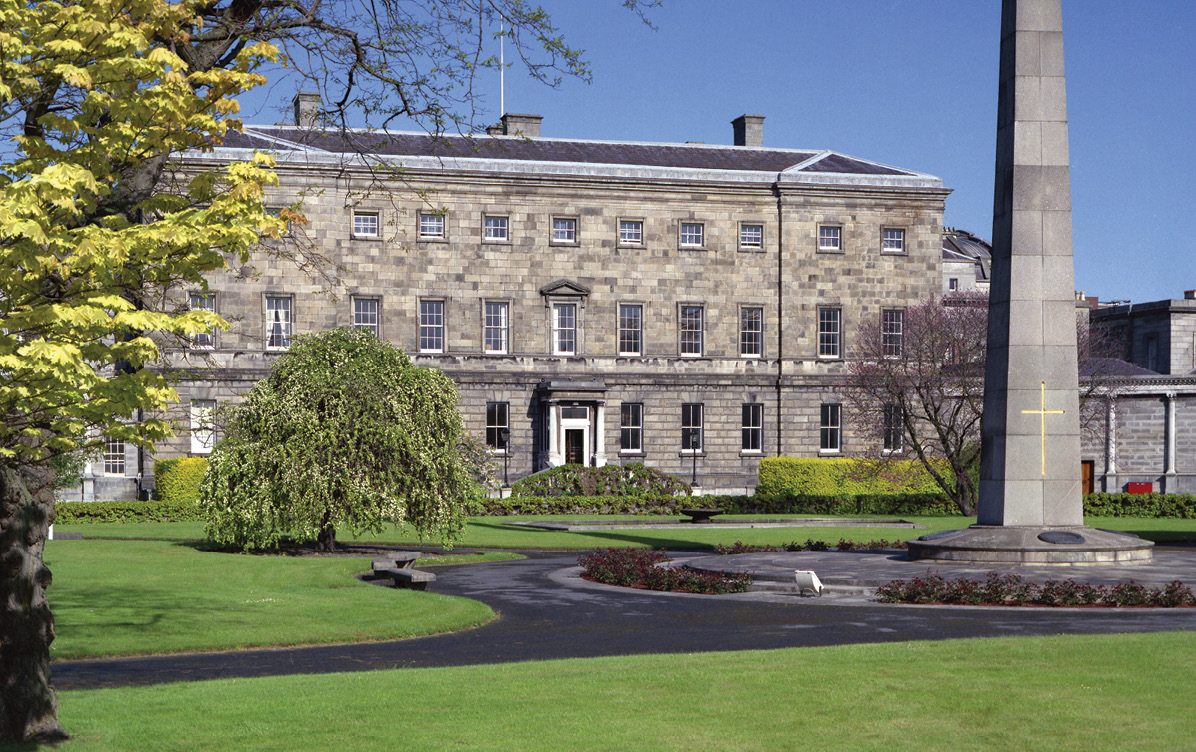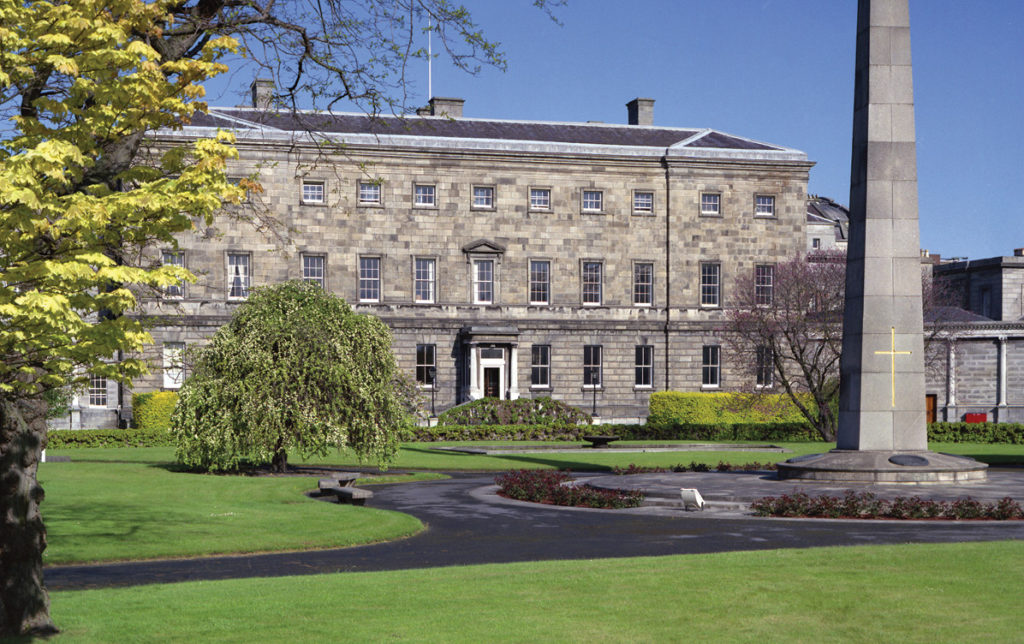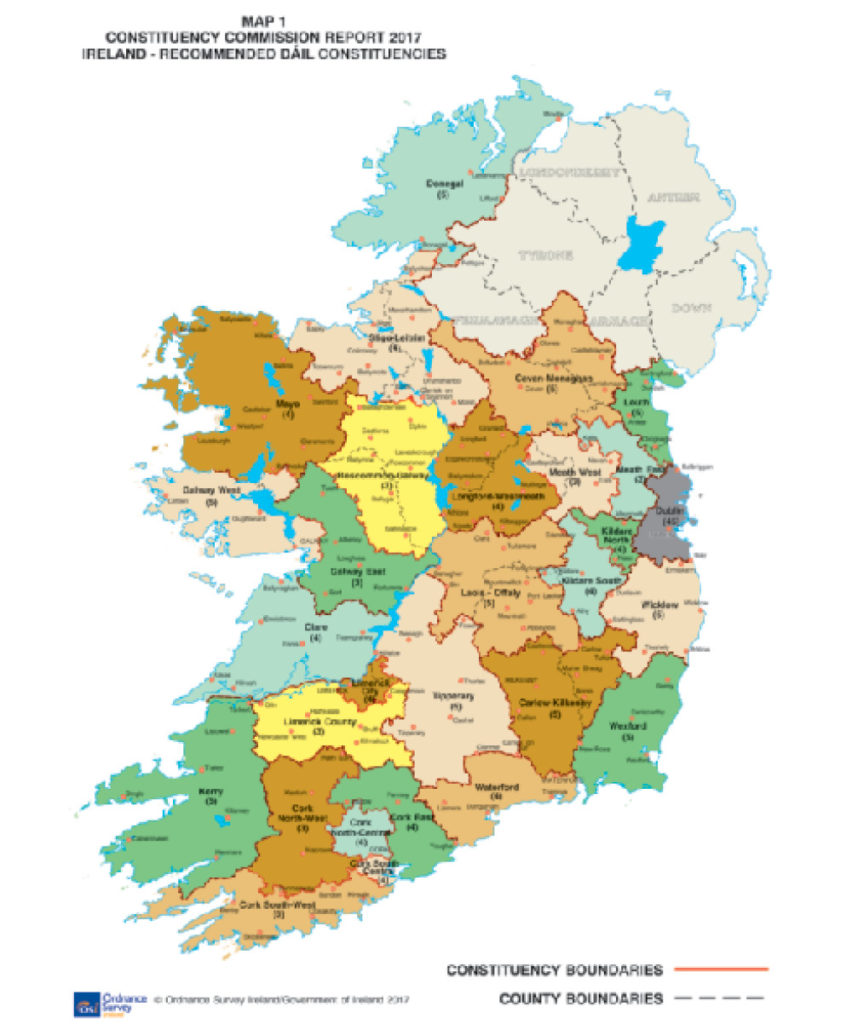Constituency recommendations know no bounds


Seán Ó Fearghaíl, Ceann Comhairle of Dáil Éireann, has been presented with the Constituency Commission’s report on Dáil and European Parliament constituencies. The Oireachtas is obligated to review constituencies at least once every 12 years in line with population changes. As such, the Constituency Commission was called upon following the 2016 Census of Population.
Under the Electoral Act 1997 (as amended), following the publication of a Census Report by the CSO, a Constituency Commission is established by the Minister to produce a report in relation to the constituencies for the election of Teachtaí Dála and the for the election of MEPs.
The Constituency Commission should consist of the Ombudsman, the clerks of both the Dáil and the Seanad, the Secretary General of the Department of Housing, Planning, and Local Government and either a Supreme Court judge or a High Court judge (nominated by the Chief Justice after consultation with the President of the High Court).
Taking effect for the 2016 general election, the Electoral (amendment) (Dáil Constituencies) Act 2013, as informed by the 2012 Constituency Commission report, defined the boundaries for the 32nd Dáil and reduced the number of Dáil seats from 166 to 158. With regards to the terms of reference set out in section six of the Electoral Act 1997, the maximum number of members of Dáil Éireann that the Commission can recommend is currently set at 160.

The recommendations made by the Commission are referenced as being an arrangement that “comes closest to achieving the optimum level of parity of representation”. This is due to the fact that the population of the State as recorded in Census 2016 is 4,761,865, which, when considering the maximum number of Dáil seats that can be recommended, comes close to breaching the constitutional threshold of 30,000 citizens per TD.
While the number of deputies is fixed by law as required, under Article 16.2.2° of Bunreacht na hÉireann, the total number should “not be fixed at less than one member for each thirty thousand of the population, or at more than one member for each twenty thousand of the population”. Likewise, the Constitution outlines that no constituency should have less than three members returned.
“The Commission has now recommended an increase of two TDs from 158 to 160 across 39 constituencies; a reduction from 40.”
As such, so far as it is feasible, the ratio between the number of members elected for each constituency and the population of each constituency, should be the same throughout the country.
Therefore, the Commission has now recommended an increase of two TDs from 158 to 160 across 39 constituencies; a reduction from 40. While 18 constituencies will remain unchanged, the remaining 21 will undergo boundary adjustments. The number of five-seat constituencies will increase by two to a total of 13, four-seaters will increase to 17 from 16 and three-seat constituencies will reduce from 13 to nine.

While the Electoral Act provides that “the breaching of county boundaries shall be avoided as far as practicable”, the Commission has made several recommendations which transcend this.
One Dáil seat will be lost through merging the three-seat constituencies of Laois and Offaly into a single five-seat constituency. Meanwhile a single seat will be added to Dublin Central, Cavan-Monaghan and Kildare-South each, constituting a net gain of two seats.
- Dublin area: Dublin Bay South, Dublin Fingal, Dublin South-Central, Dublin Mid-West, Dublin South-West and Dublin West are recommended to remain unchanged. However, “Adjustments should be made between Dublin Rathdown and Dún Laoghaire, and Dublin North-West, Dublin Bay North and Dublin Central which should change from a three-seat to a four-seat constituency.”
- Cavan-Monaghan and Meath: The Commission recommends that the entire counties of Cavan and Monaghan should form a five-seat Cavan-Monaghan constituency along with additional population from Meath East. The rest of Meath East should remain a three-seat constituency.
- Meath West, Louth and Longford-Westmeath: The Commission Report recommends that these remain as a three-seater, a five-seater and a four-seater respectively.
- Sligo-Leitrim and Roscommon-Galway: The report recommends that the Sligo-Leitrim constituency should comprise the counties of Sligo and Leitrim, with some population from both south Donegal (unchanged) and Roscommon to form a four-seater. Meanwhile, Roscommon-Galway should remain as a three-seat constituency, augmented with additional population from Galway East. Galway East too should remain as a three-seater with some population from Galway West.
- Galway and Mayo: Galway West should be retained as a five-seater with further population transfers to Mayo, simultaneously assisting Mayo to retain its four-seat status.
- Clare and Limerick: The Commission recommends that Clare should form a four-seat constituency, while the Limerick should form a three-seat county constituency and a four-seat city constituency with additional population from County Tipperary. The rest of Tipperary, including a portion currently in the existing Offaly constituency, could then form a five-seat constituency.
- Kildare and Laois: The County of Kildare, with additional opoulation from counties Offaly and Laois should form Kildare North and Kildare South each with four seats. The remainder of Laois and Offaly could then form a single five-seat constituency.
- Carlow-Kilkenny and Wicklow: The Commission recommends that the entire counties of Carlow and Kilkenny merge to form a five-seater, while the entire county of Wicklow does likewise.
- Cork, Kerry, Waterford and Wexford: The Report recommends no change to any of the five Cork constituencies or to those of Kerry, Waterford or Wexford.
The Commission recommended that no changes be made to the boundaries of the three European Parliament constituencies for the election of 11 MEPs, namely Dublin, Midlands-North-West and South.





